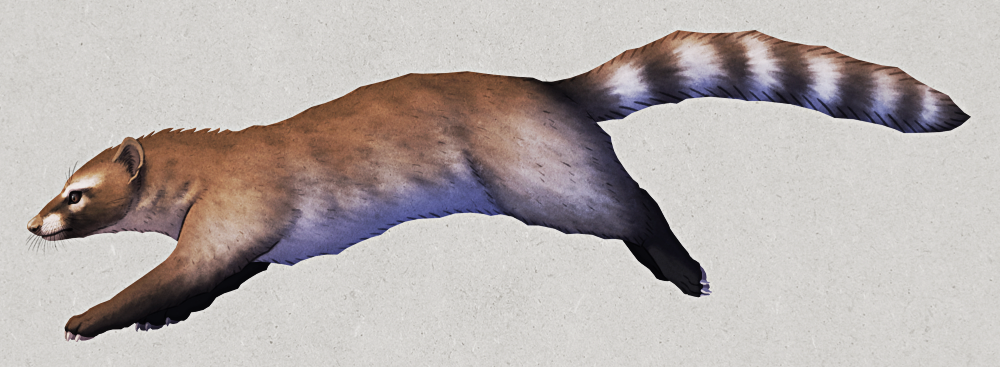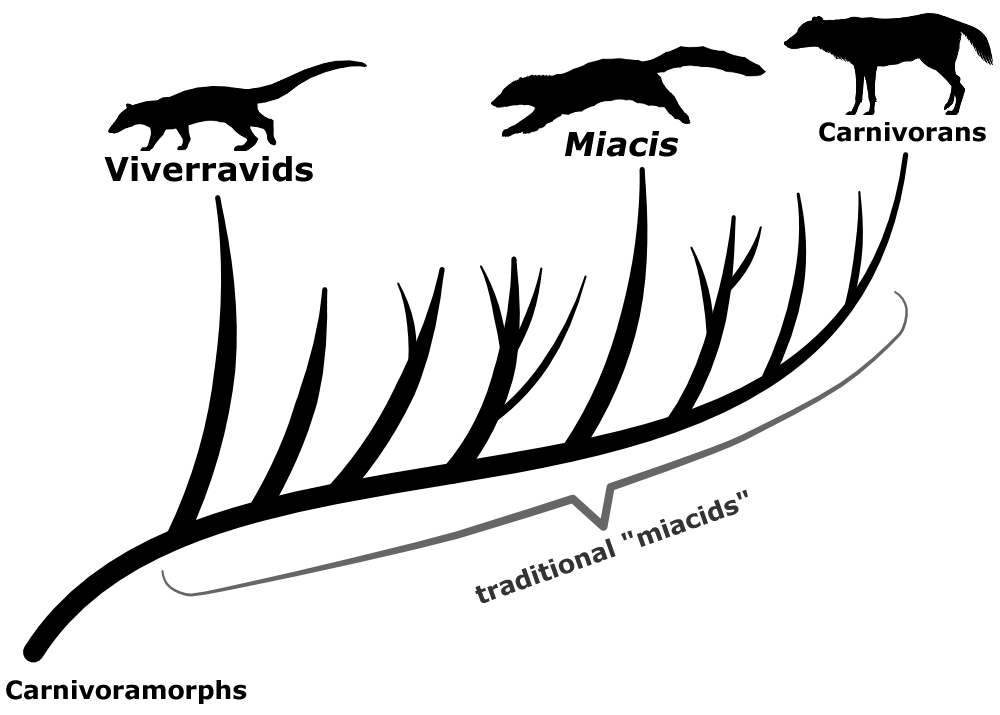Most modern meat-eating placental mammals are carnivorans, a group that contains two distinct lineages: the feliforms (cats, hyenas, mongooses, viverrids, civets, linsangs, and euplerids) and the caniforms (dogs, bears, seals, raccoons, and mustelids).
The closest living relatives of these animals are pangolins, and their last common ancestor probably lived sometime between the Late Cretaceous and early Paleocene. But the actual early evolutionary history of the carnivorans themselves is rather murkier.
The earliest known carnivoran-like forms – known as carnivoramorphs – all looked vaguely-genet-like and were an ecologically diverse bunch of small predators, ranging from weasel-sized tree-climbers to fox-sized ground-based hunters, found all across North America and Eurasia during the Paleocene and Eocene. They lacked most of the anatomical specializations of true carnivorans, and didn’t quite fit into either the feliforms or caniforms, but their distinctive carnassial teeth make it obvious they were still very closely related.
From their initial discovery in the late 19th century, through to the late 20th century, these carnivoramorphs were traditionally all lumped together under the name “miacids“. As a result the group quickly turned into a big wastebasket taxon of similar-looking animals, all united more by just not being true carnivorans than by any shared characteristics between themselves.

But during the last couple of decades this mess has finally started to get cleared up. One distinct lineage of miacid-like animals called viverravids were split off, now thought to be the one of very earliest branches of the carnivoramorph evolutionary tree. Several other “miacids” have also been reassessed and renamed, reclassified as falling into various points in an evolutionary grade between viverravids and true carnivorans, and a couple of species even turned out to actually be caniforms.

The true carnivorans arose from somewhere within the “miacids” during the mid-Eocene, but it’s still unclear where exactly to draw the taxonomic line between them. Forms like Quercygale and Tapocyon might be very close to the ancestral carnivoran – but they might instead be early feliforms – and some studies have also proposed that nimravids (“false sabertooth cats”) may actually be “advanced” carnivoramorphs instead of early feliforms.
There are also quite a few remaining “miacids” that still need sorting out, especially in the genus Miacis. There have to be other distinct lineages of these carnivoramorphs still hidden in the remaining wastebasket pile, and if we can eventually distinguish them from each other it might help to make early carnivoran relationships a bit clearer.
